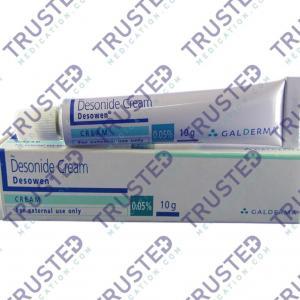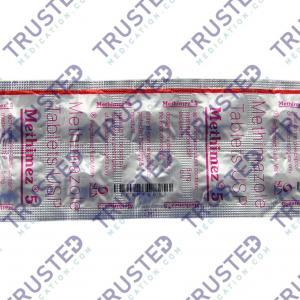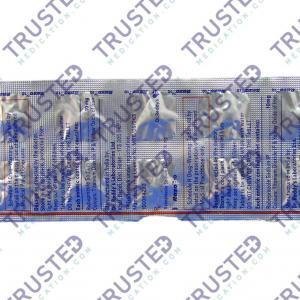
The mucus, also known as phlegm, is a normal part of the respiratory system. It helps to lubricate and protect the airways, and it is produced in the nose, sinuses, and lungs.
Under normal circumstances, mucus is clear or may have a slight yellowish tint. However, in some cases, mucus can become discolored and turn brown.
Brown mucus is connected with a variety of illnesses, including:
· Smoking
· Chronic lung disease
· Viral or bacterial infection
Brown mucus is also known as brown sputum or phlegm.
Causes of Brown Mucus or Phlegm
If you observe brown phlegm, don’t be too concerned, especially if you’re healthy, young, and don’t smoke or have any other risk factors. However, you should never ignore the presence of brown phlegm. There are several possible causes of brown mucus or phlegm. These include:
1. Infection: Bacteria, viruses, or fungi can infect the respiratory system and cause the production of brown mucus. The presence of blood in the mucus can also cause it to appear brown.
2. Smoking: Smoking can irritate the respiratory system. Thus, causing the production of brown or black mucus. This is due to the inhalation of tar and other harmful substances found in tobacco smoke.
3. Chronic bronchitis: Chronic bronchitis is a long-term respiratory condition. It is characterized by inflammation and narrowing of the airways. Chronic bronchitis can cause the production of large amounts of mucus, which may be discolored and appear brown.
4. Aspiration: Aspiration is the inhalation of foreign matter, such as food, liquid, or vomit, into the respiratory system. This can cause the production of brown or gray mucus.
5. Exposure to pollutants: Exposure to pollutants, such as dust, fumes, or chemicals, can irritate the respiratory system and cause the production of brown mucus.
Symptoms of Brown Mucus or Phlegm
The symptoms of brown mucus or phlegm can vary depending on the underlying cause. In general, you may experience:
- Coughing, which may produce brown or discolored mucus
- Chest pain or tightness
- Wheezing or shortness of breath
- Fever or chills
- Fatigue or weakness
Treatment of Brown Mucus or Phlegm
The treatment of brown mucus or phlegm depends on the underlying cause. In some cases, it may resolve on its own without treatment. However, if the underlying cause is an infection, smoking, or chronic bronchitis, treatment may be necessary.
1. Antibiotics
If the brown mucus is caused by a bacterial infection, antibiotics may be prescribed to kill the bacteria and clear the infection. However, antibiotics are not effective against viral infections, so they may not be helpful in those cases.
2. Quitting smoking
If it is due to smoking, quitting smoking can help to reduce the production of discolored mucus. Quitting smoking helps improve your overall respiratory health.
3. Bronchodilators
In cases of chronic bronchitis, bronchodilators may be prescribed to help widen the airways and improve breathing. These medications can help to reduce the production of mucus. It also makes it easier to cough up.
4. Expectorants
Expectorants are medications that can help to thin and loosen mucus, making it easier to cough up. These may be prescribed in cases of chronic bronchitis or other conditions that cause the production of thick or sticky mucus.
5. Hydration
Staying hydrated can help to thin mucus and make it easier to cough up. Drinking plenty of fluids, such as water, tea, or soup, can help to keep the respiratory system hydrated and improve mucus clearance.
6. Steam therapy
Steam therapy, such as using a humidifier or taking a hot shower, can help to loosen mucus and improve its clearance from the respiratory system.
Prevention of Brown Mucus or Phlegm
There are several steps you can take to prevent brown mucus or phlegm:
1. Avoid smoking: Smoking is a major cause of discolored mucus. So, avoiding smoking and exposure to secondhand smoke can help to reduce the risk of developing brown mucus.
2. Avoid pollutants: Exposure to pollutants can irritate the respiratory system. Thus, leading to the production of brown mucus. Examples of pollutants includes air pollution, dust, and chemicals, If possible, avoid exposure to these pollutants or wear a mask to protect yourself.
3. Practice good hygiene: Wash your hands frequently. Avoid close contact with people who are sick. Doing these can help to prevent the spread of respiratory infections. It also reduces the risk of developing brown mucus caused by infection.
4. Stay hydrated: Drinking plenty of fluids can help to keep the respiratory system hydrated and thin mucus, making it easier to cough up.
5. Manage chronic conditions: If you have a chronic respiratory condition such as chronic bronchitis, managing your condition with medication and lifestyle changes can help to reduce the production of brown mucus.
When to See a Doctor
While brown mucus is not always a cause for concern, it can be a sign of an underlying respiratory condition or infection. If you are experiencing other symptoms, such as a fever, chest pain, or difficulty breathing, you should see a doctor.
They can perform a physical examination and order tests to determine the cause of the brown mucus and recommend appropriate treatment.
In some cases, brown mucus may indicate a more serious condition, such as pneumonia or lung cancer. If you are experiencing persistent or severe symptoms, it is important to seek medical attention promptly.








